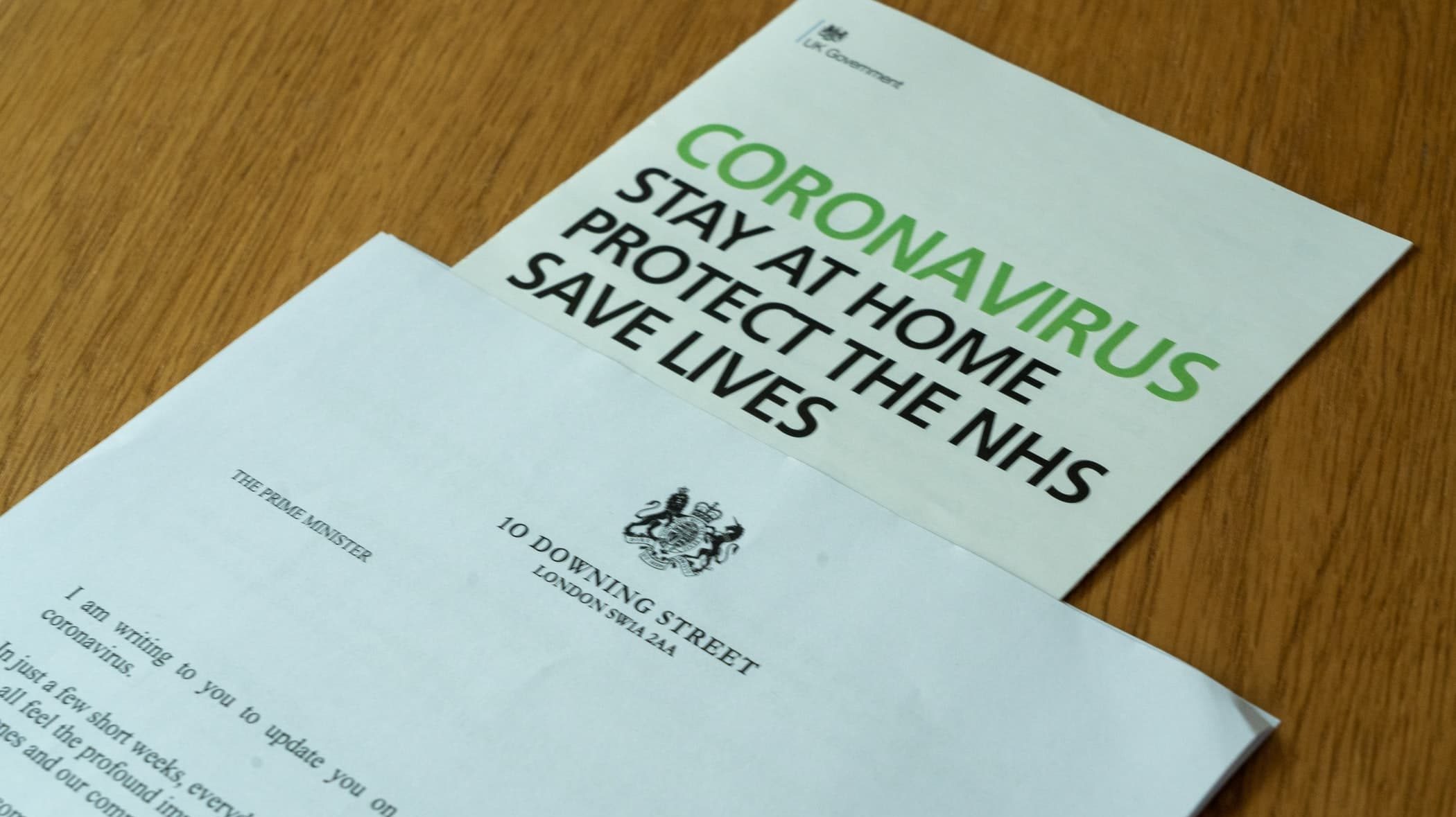Elke Hausmann is a salaried GP in Derby.
On 5th and 6th July 2023 I joined a webinar organised by the National Institute for Health and Care Research Clinical Research Network North Thames in association with Long Covid Support and Long Covid Scotland entitled ‘Long COVID: what needs to happen next?’.
This webinar (consisting of two 3-hour sessions) brought together a wealth of clinicians, researchers, and representatives from other organisations like the Medicines and Healthcare products Regulatory Agency (MHRA), the National Institute for Health and Care Excellence (NICE), and the Trades Union Congress (TUC) on the topic of long COVID, many of whom seemed to have personal experience of long COVID (probably reflecting the current societal state in which many of those not affected, are not interested).
“I recognised myself in so many of the patient experiences described.”
The first day focused on long COVID clinics in the devolved nations, as well as long COVID in primary care (by Carolyn Chew-Graham, GP and Professor of General Practice Research), including presenting studies on long COVID patient experiences, and lessons from and barriers to long COVID research (by Ami Banerjee, cardiologist and Professor in Clinical Data Science, and Nisreen Alwan, Professor of Public Health).
The second day focused on the economic impact of long COVID, presenting results from the LOCOMOTION study and a TUC study on experiences of workers with long COVID, and two sessions on long COVID clinical research in practice (by Trish Greenhalgh, Professor of Primary Care, and Fiona Glen from NICE), finishing with a panel discussion with members ranging from cardiology and respiratory consultants and GPs to representatives from NICE and MHRA, chaired by long COVID patient advocates.
I was very impressed by all those professionals working hard to make a difference for other people. I recognised myself in so many of the patient experiences described. Alwan showed us the wheel of power and privilege: the closer to the centre you are considering many personal attributes, the more power you have in society; the further away you are from it, the more marginalised you are and the more difficult it will be for you to effect change for yourself and/or others. Within it, I am sitting close to the centre — I am one of those people who can negotiate their way around the healthcare system better than other people, and who has initially sought alternative explanations for my symptoms other than long COVID (cue the referral to the rheumatology clinic, not the long COVID one).
Some people further away from the centre might struggle to even access a GP in the first place, and may get no medical care at all. There is still some stigma around long COVID — I was definitely dealing with some internalised stigma, questioning whether there might be some psychological aspect contributing to this illness that would make it somehow my fault that I got ill in the first place or wasn’t getting better quickly.
Some of the experiences in the TUC report on workers’ experiences (23% said their employer has questioned whether they have long COVID and/or the impact of their symptoms1) might have resonated with me early on in the pandemic when nobody understood what was happening, but not now, and it is inexcusable that this is happening today, considering all we have learnt. Long COVID is neither recognised as a disability nor as an occupational disease (yet?). All evidence tells us that many people with long COVID are suffering in many ways.
“Public funds for research are drying up due to a political and societal stance that COVID-19 is over … “
What have I learnt that goes beyond putting my own experience into context? First of all, long COVID clinic provision is patchy (non-existent in Scotland). A survey of patients (by Long Covid Support presented during the webinar) has shown that a minority are satisfied with them. Some of that may have to do with unrealistic expectations — there are no cures that can be offered by them at the moment. But why the patchy provision? Greenhalgh gave her own view on that, she is probably the most qualified person in the country having visited many long COVID clinics and having seen hundreds of patients with long COVID. Her account was fascinating.
She thinks much of it has to do with the condition itself, which is so complex and manifests in so many ways, interacting with what the person was like before they got COVID-19, with COVID-19 interacting with the body and mind, and pre-existing illnesses. An underlying endotheliitis can potentially affect any organ in the body including the brain, so there are no ‘ideal type’ patients with long COVID (she compared that with diabetes, where there are three or four ‘ideal types’ of patients; for example, the teenager with type 1 diabetes mellitus, or the older person with multimorbidity including type 2 diabetes mellitus, and we have defined treatment approaches for those different types that makes treating them relatively easy), therefore in long COVID the treatment has to be much more individualised.
Patients are referred to other specialities depending on what their problems are (for example, to cardiology or mental health), and while establishing long COVID clinics across the country and doing research there included an attempt at standardising the pathways — this had unintended consequences. Greenhalgh gave the example of how long COVID clinics use standardised questionnaires they require themselves, in addition to the questionnaires patients need to fill in for onward referral, depending on what the local services demand, which may be too much for somebody with fatigue, concentration issues, or brain fog — she even said it ‘dehumanises’ patients (whom does this help? Not the patient).
“Not investing in research now risks a potentially massive public health impact decades down the line.”
Greenhalgh also talked about the importance of individual practitioners within long COVID clinics who can become very specialist and instrumental in a local service, with great detriment to the service if they leave and individual expertise is lost. Her current assessment is that it is ok to have variation. She was herself involved in developing the NICE guidelines on long COVID, which have not been updated since November 2021 (Glen from NICE explained that they are constantly monitoring research output but nothing has come out that would require them to change the guideline yet) and stated that she thinks we are never going to get a guideline on everything that everyone wants from it. She talked about how guidelines are used in the real world (dipped in, applied on this occasion, ignored on another). She feels that treating every patient as an individual and providing holistic care is key (but I think very difficult, putting my GP hat on — requiring time-intensive, relationship-based care, exactly what we are able to provide less and less of in the current system).
We heard about the massive economic impact of long COVID on the country, with workers missing in the education and health and social care sectors (which all can ill afford that at the present time), as well as on individuals, which seems to be very much ignored by government and society. We heard about excess cardiac deaths, which cannot all be attributed to a crumbling NHS. We heard about the perspective of GPs who can offer support and a relationship, but not much beyond that in terms of treatment. One-quarter of patients have sought private treatment according to the above mentioned patient survey by Long Covid Support. Chew-Graham described how some of those patients attend with requests for unlicensed, non-evidence based, and uncommissioned medications recommended by private specialists and the potential damage to the doctor–patient relationship if and when that is declined, as GPs are unable to prescribe in those circumstances.
“… long COVID is being kept out of the public consciousness, partly due to incorrect public health messaging.”
The last session was a panel of experts who addressed the theme of the webinar: long COVID, what needs to happen next? The consensus was that we have done the surveys, we know enough about how long COVID affects people’s lives, we know about the economic impact, but we are not much further with research into the underlying biomedical mechanisms (while there are many theories), and the development of biomarkers and therapeutics.
Public funds for research are drying up due to a political and societal stance that COVID-19 is over, and long COVID is being kept out of the public consciousness, partly due to incorrect public health messaging. There are no applications for new drugs pending for long COVID at the MHRA, and while there is a wealth of experience now with repurposed drugs to treat some of the symptoms of long COVID (for example, postural tachycardia syndrome), they are not necessarily licensed and not widely known about.
Doctors (and organisations like MHRA) are working on the principle ‘First do no harm’, but don’t take into account the harm they are perpetuating by not doing anything (for example, not prescribing medications that are not licensed but might help an individual), whereas individual patients often make very different risk/benefit assessments — they accept the risk a medication might pose to them for the potential benefit of improvement in symptoms, as that might reduce the harms of not being able to work, losing income, and not contributing financially and emotionally to family life.
Not investing in research now risks a potentially massive public health impact decades down the line. We already have the excess cardiovascular deaths; we know that COVID-19 causes endothelial damage and thus is a risk factor for cardiovascular disease just like high cholesterol, smoking, or diabetes, which we are trying to control aggressively, while there is no attempt at preventing people from getting COVID-19 anymore. And it is worth labouring the point that this endothelial damage might not only affect people who are currently living with long COVID, but anyone who has ever had COVID-19.
What has to happen next? Some of the main points by the panel were:
- disseminate the experience on repurposed medications that can treat some of the long COVID symptoms so that GPs and long COVID clinics have something to offer to patients NOW;
- raise awareness through public health messaging to counteract the political and societal apathy on COVID-19 and long COVID (including within the health service itself);
- more research into the pathophysiology, so that ultimately biomarkers and new treatments can be developed; and
- raise money in whatever way possible (ideally from government, but if necessary through any other means like private philantropy or charity donations) so that research can continue and accelerate.
Reference
1. Trades Union Congress, Long Covid Support. Workers’ experience of long covid. 2023. https://www.tuc.org.uk/research-analysis/reports/workers-experience-long-covid (accessed 23 Aug 2023).
Featured photo by Fusion Medical Animation on Unsplash.








